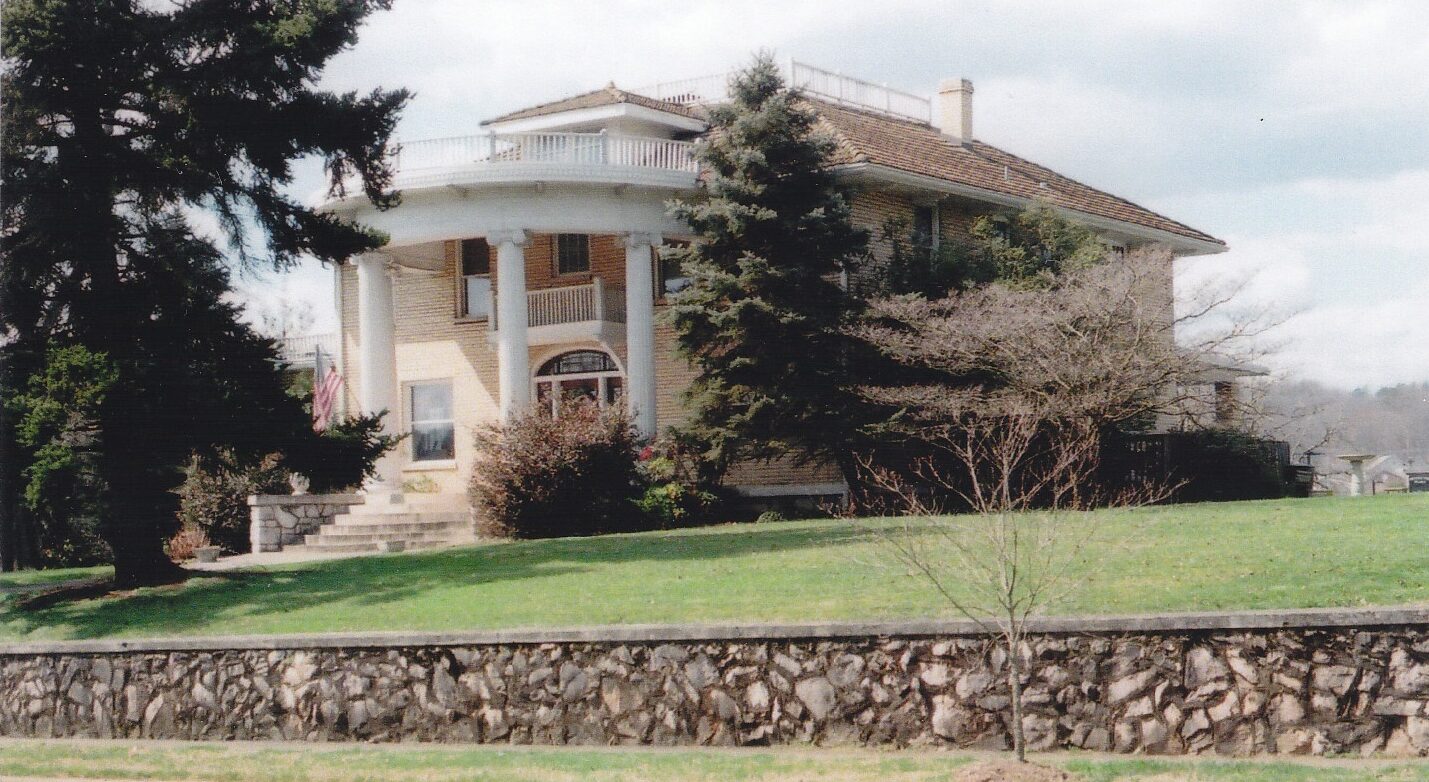The word has been out for the past week that the famous Dempster mansion on Gibbs Drive in Fountain City is up for sale, for a cool $1.2 million if you happen to have that lying about. Much has been written about its most famous occupant, George Dempster.
Our late friend and columnist, Dr. Jim Tumblin, wrote several stories about the inventor of the Dempster Dumpster and former Knoxville mayor, which you can read here and here. Dempster and his family only lived in the house for four years, from 1928-1932, when it was lost to bankruptcy in the middle of the Great Depression.

Louis Francis Jr. (Photo courtesy of East Tennessee Veterans Memorial Association)
The mansion, however, is also known as the Dempster-Francis house, the latter often misspelled as Frances, perhaps thinking that name came from Dempster’s wife, Frances. The name came from the home’s longest occupants. In 1934, coal and real estate magnate Louis Francis Sr. purchased the home. It was occupied by his widow, children or grandchildren from after his death in 1952 until 1998.
Louis was the son of a self-made coal miner/industrialist from Pennsylvania, Phillip Francis. The father was known as “Lead Man” and considered a hero of the Coal Creek/Fraterville Mine disaster of 1896. Phillip and his wife, Annie, once lived in the craftsman style home at 3005 N. Broadway (which is a whole other story).
Along with his brothers Tom and Paul, Louis (often misspelled as Lewis), operated the Francis Brothers Mining Company. He shared the Gibbs Drive home with his wife, Lena Duke Hawkins of Kentucky. The couple had five children, Lucille, Margaret, Mary, Philip and Louis Jr. The two boys definitely moved into the house with their parents as they were not yet 18 years old. A span of 17 years covered the births of oldest daughter, Lucille, and youngest son, Louis Jr.

Philip Francis and Louis Francis Jr. (Photo courtesy of East Tennessee Veterans Memorial Association)
Sadly, by the time a decade had passed from moving into their beautiful home, the Francis family had lost both boys. Philip succumbed to sunstroke while in training at Camp (now Fort) Rucker in Alabama in 1943 in the midst of World War II. A graduate of Knoxville High School, he is buried in the family mausoleum at Lynnhurst Cemetery.
Louis Jr. never made it back to Fountain City. He enlisted at Camp Forrest, Tennessee, in April 1942 and attained the rank of corporal, serving in the Army Air Forces’ 507 Parachute Infantry Regiment. He was killed in action on June 15, 1944, during the airborne invasion of Normandy, France. He was awarded these service medals: Purple Heart, Croix-de-Guerre Unit Citation (French), European-African-Middle Eastern Campaign Medal with one Bronze Service Star and Arrowhead, World War II Victory Medal, WWII Honorable Service Lapel Button, Parachute Badge, Combat Infantryman Badge and Presidential Distinguished Unit Emblem.

Louis Francis Jr.’s grave in Normandy (Photo courtesy of East Tennessee Veterans Memorial Association)
Along with many who gave their lives in Operation Overlord, Louis Francis Jr. is buried in the Normandy American Cemetery, Colleville-sur-Mer, France. If life ever affords you the opportunity to visit this hallowed place, I humbly suggest you do. You can pay your respects to Louis Jr. at Plot F, Row 24, Grave 28.
There will be an open house at the Dempster-Francis mansion on Wednesday in conjunction with the ribbon cutting for the Gibbs Drive Dogwood Arts Trail from 5-7 p.m.
Beth Kinnane is the community news editor for KnoxTNToday.com
Sources: East Tennessee Veterans Memorial Association and Knoxville News Sentinel digital archives at Knox County Library.



